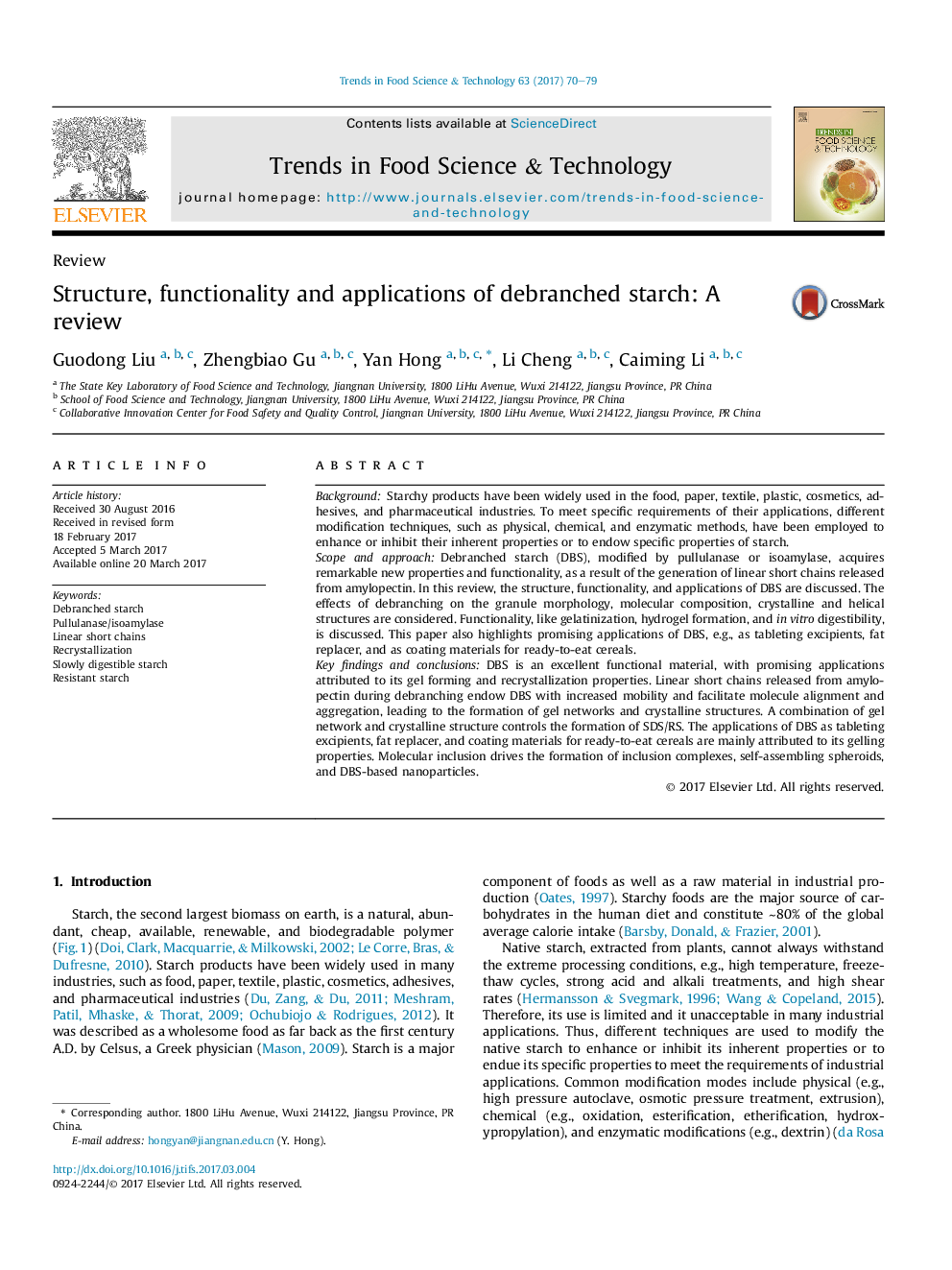| کد مقاله | کد نشریه | سال انتشار | مقاله انگلیسی | نسخه تمام متن |
|---|---|---|---|---|
| 5523673 | 1546116 | 2017 | 10 صفحه PDF | دانلود رایگان |
- Linear short chains generated after debranching.
- Molecule alignment and aggregation was facilitated after debranching.
- Debranched starch possesses gel forming and recrystallization properties.
- Debranched starch is an excellent functional material with promising applications.
- Debranched starch is a good source of SDS and RS.
BackgroundStarchy products have been widely used in the food, paper, textile, plastic, cosmetics, adhesives, and pharmaceutical industries. To meet specific requirements of their applications, different modification techniques, such as physical, chemical, and enzymatic methods, have been employed to enhance or inhibit their inherent properties or to endow specific properties of starch.Scope and approachDebranched starch (DBS), modified by pullulanase or isoamylase, acquires remarkable new properties and functionality, as a result of the generation of linear short chains released from amylopectin. In this review, the structure, functionality, and applications of DBS are discussed. The effects of debranching on the granule morphology, molecular composition, crystalline and helical structures are considered. Functionality, like gelatinization, hydrogel formation, and in vitro digestibility, is discussed. This paper also highlights promising applications of DBS, e.g., as tableting excipients, fat replacer, and as coating materials for ready-to-eat cereals.Key findings and conclusionsDBS is an excellent functional material, with promising applications attributed to its gel forming and recrystallization properties. Linear short chains released from amylopectin during debranching endow DBS with increased mobility and facilitate molecule alignment and aggregation, leading to the formation of gel networks and crystalline structures. A combination of gel network and crystalline structure controls the formation of SDS/RS. The applications of DBS as tableting excipients, fat replacer, and coating materials for ready-to-eat cereals are mainly attributed to its gelling properties. Molecular inclusion drives the formation of inclusion complexes, self-assembling spheroids, and DBS-based nanoparticles.
Journal: Trends in Food Science & Technology - Volume 63, May 2017, Pages 70-79
